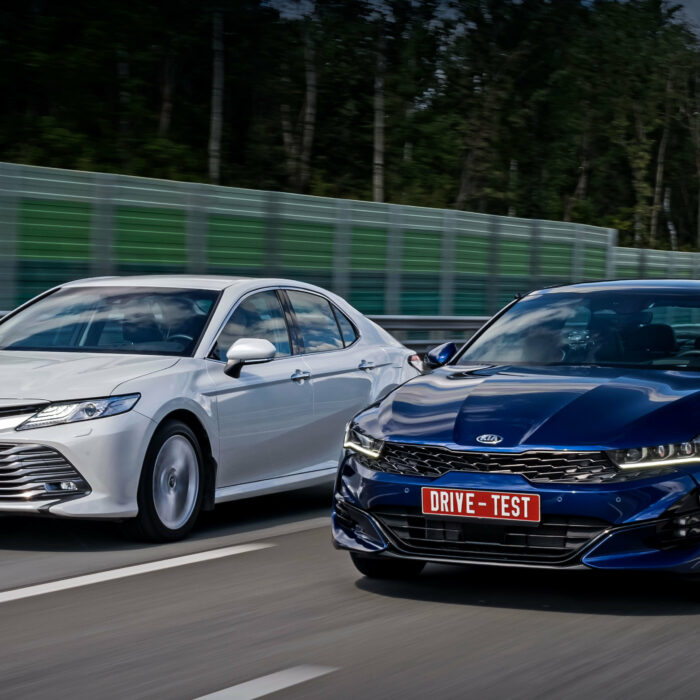Which winter tires to choose—studded or studless? In our tests, we consistently compare them on ice, snow, and asphalt. This time, however, we will focus solely on asphalt and test just two sets of tires from the same brand, Gislaved—the studded NordFrost 200 and the studless SoftFrost 200. Besides a sprint test comparing braking capabilities on wet and dry asphalt, our program includes a marathon: a drive from Moscow to Saint Petersburg to assess the impact of studs on fuel efficiency.
Unlike many other brands, Gislaved remains in Russia. Moreover, after the departure of its parent company Continental, its plant in Kaluga and some tire models have transitioned to the Gislaved brand. For our experiment, we chose the well-known 200 series tires, which have been in production for ten years. They have participated in several comparative tests by Autoreview, and we usually recommend them primarily for urban winter use.
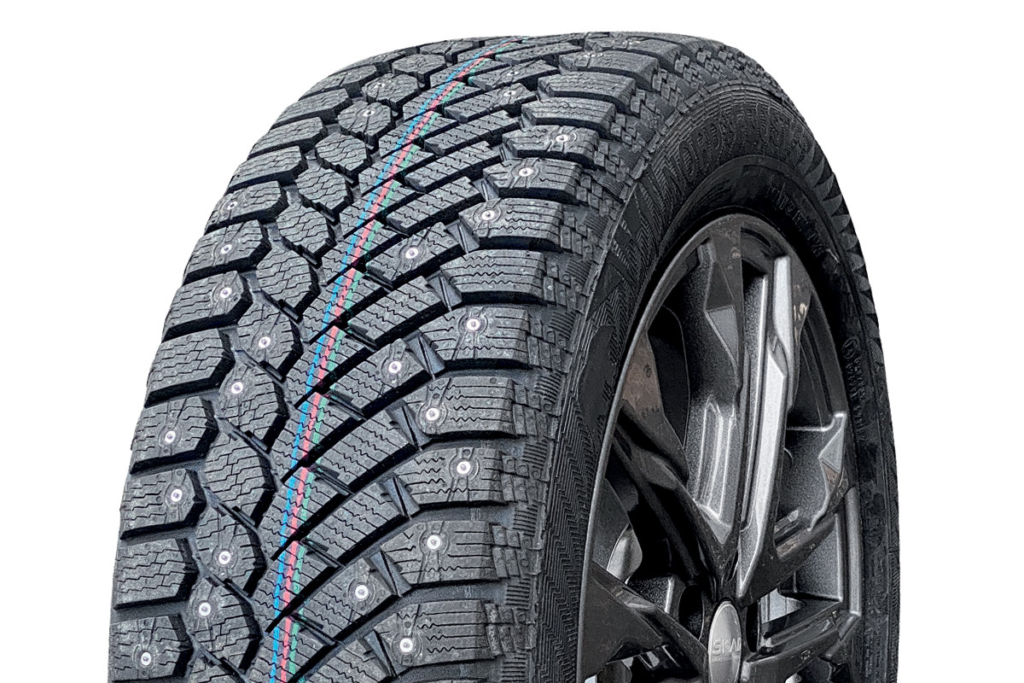
Gislaved Nord*Frost 200
The studded Gislaved NordFrost 200 model is still one of the quietest among competitors who have entered an “arms race” in terms of the number of studs. There are models, including Chinese ones, with up to 180, 200, 250 studs! But the 17-inch Gislaved NordFrost 200 tires have only 130 studs. Of course, it’s hard to compete on ice with such a number, but on asphalt…
You can find Gislaved’s snow and ice performance in our comparative tests. The task of this study is to show in numbers the differences between studded and studless tires from the same manufacturer when driving on asphalt. After all, no matter how severe the winter, in large cities, roads are usually cleared, and cars often travel on asphalt, not to mention during interseasonal periods or thaws.
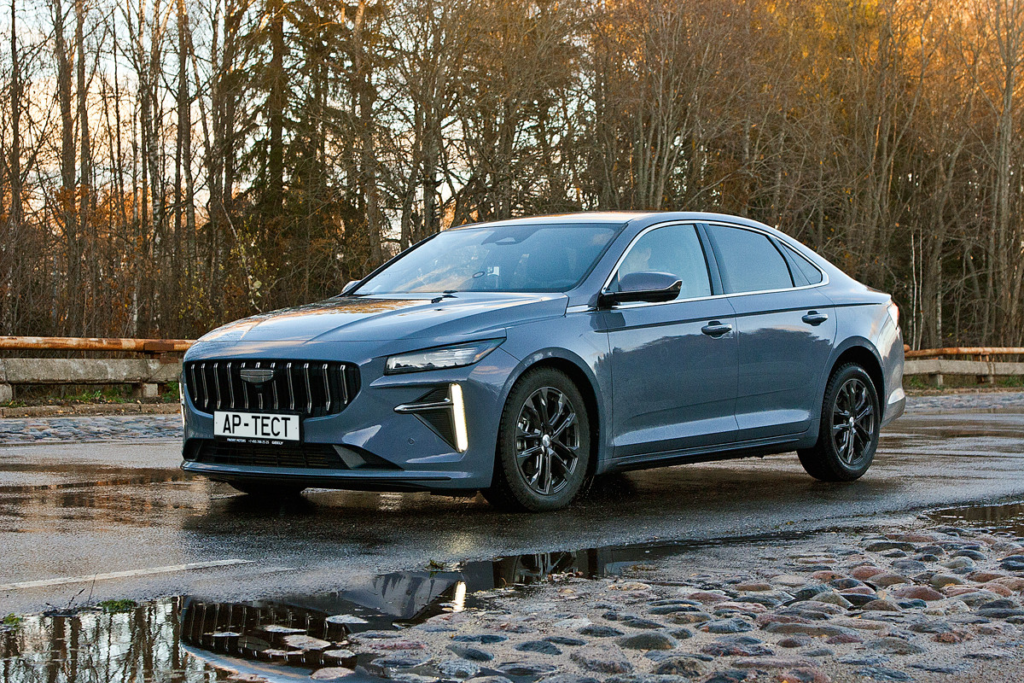
Naturally, the dimensions of the test tires are the same: 215/55 R17. Speed and load indexes also match—98T, meaning the load capacity is up to 750 kg, and the speed is up to 190 km/h. Both sets were mounted on identical “Skad Atakor” wheels, and we used the recently released Geely Preface sedan in Russia as the test vehicle. The factory wheels on this car are 18 inches, fitted with Chinese Atlas tires. Thus, the weight of each of these is 22.8 kg. The 17-inch versions are lighter: with studded tires, they weigh 22.0 kg, and with studless tires, 21.1 kg. Thus, switching to 17-inch dimensions reduces unsprung mass, thereby lessening the load on suspension components.
Why do studded tires weigh nearly a kilogram more than studless ones? Understandably, this can’t all be attributed to the studs themselves: each weighs no more than 1.6 grams, totaling 208 grams per tire. The rest of the difference is due to a larger amount of rubber since the tread of studded tires must also ensure reliable fixation of the studs. For this purpose, a harder rubber is used in their manufacture. In our case, the difference is 10 units on the Shore scale: 67 for studded and 57 for studless tires.
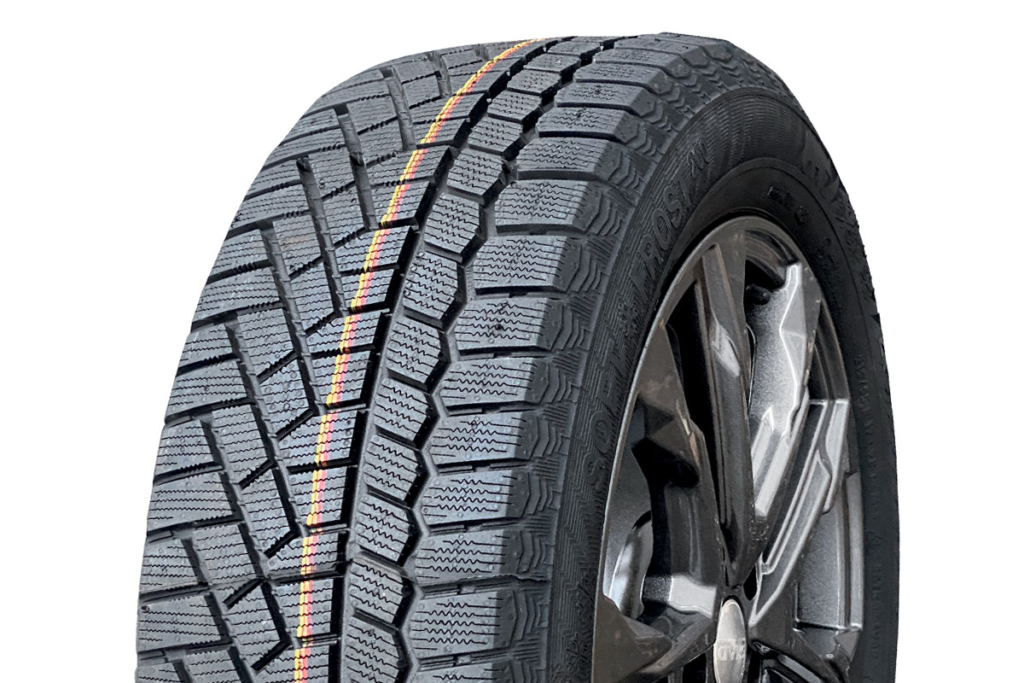
Gislaved Soft*Frost 200
Having completed static measurements, I set off to test winter tires in Saint Petersburg. Not exactly to break them in… The main purpose of this trip is to assess the real impact of winter tires on fuel efficiency. I drove to Saint Petersburg on studded Gislaved NordFrost 200 tires and returned on studless Gislaved SoftFrost 200 tires. The load was the same, and the travel mode on the M11 toll road was a constant speed of 130 km/h on cruise control. Naturally, there were moments when I had to brake for lunch or refueling, but over a distance of 650 km, these are minor influences on the outcome.
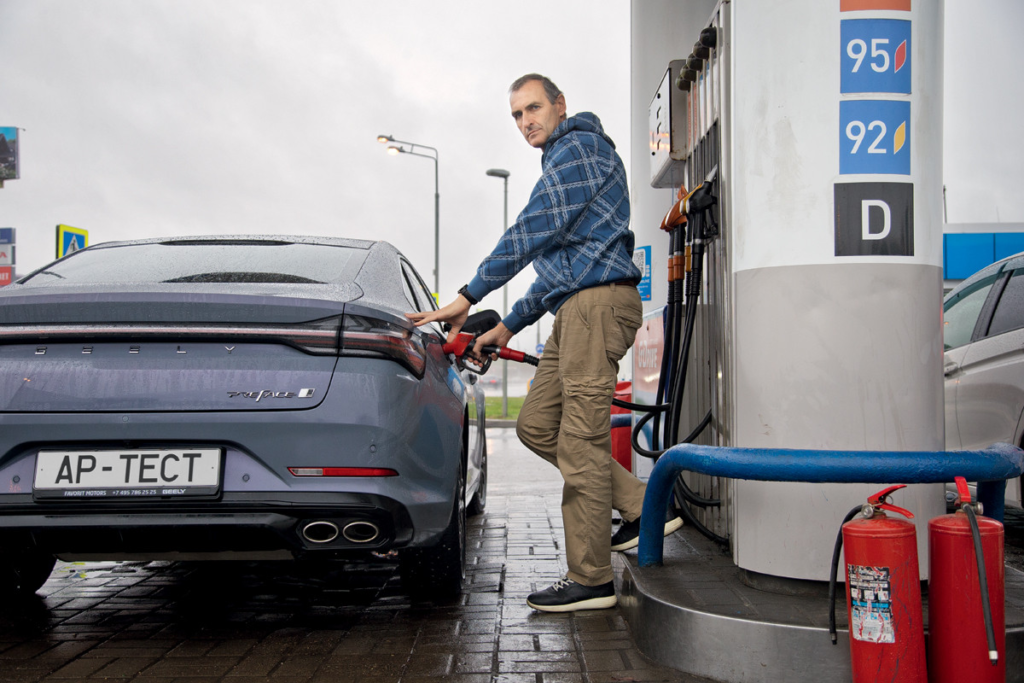
Fuel consumption assessment – based on data from fuel dispensers
After filling up the tank at the outskirts of Moscow, I hoped to reach Saint Petersburg without refueling, but it became clear halfway that the 49-liter tank of the Geely was too small for such a journey. It might have been enough if traveling at 100—110 km/h, but at the legally allowed speed of 130 km/h from April to October, that would be too slow and dismal.
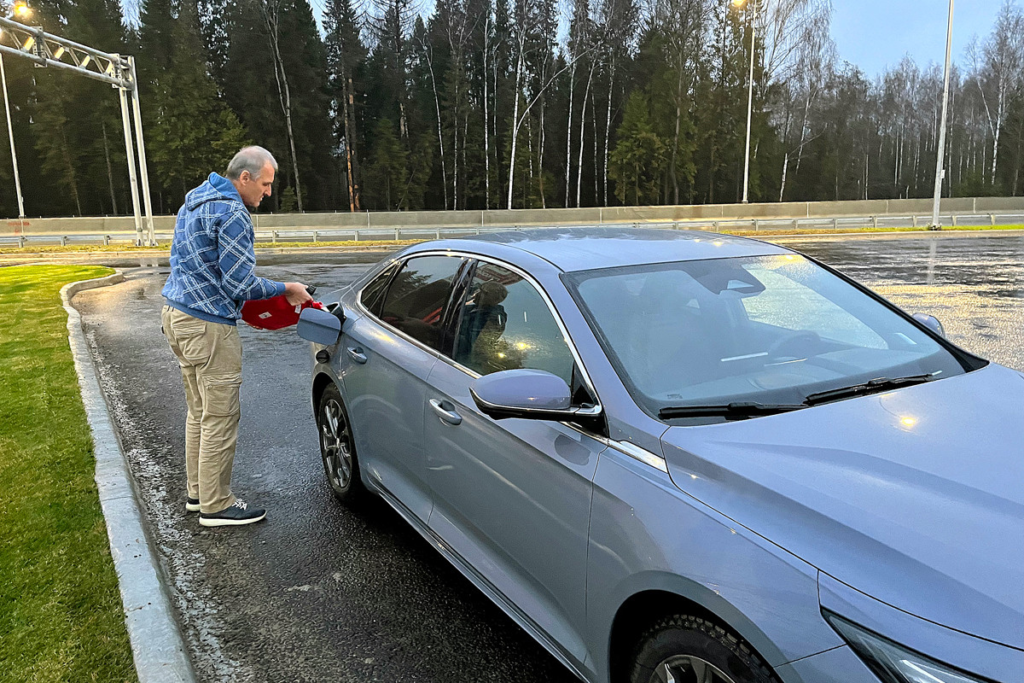
Interestingly, the onboard computer of the Geely Preface sedan provided contradictory information throughout the trip—showing an average fuel consumption of 7.3—7.5 l/100 km, but the remaining range was calculated quite differently, promising a range of 80—100 km less than 49/7.5 = 653 km. It’s good that I didn’t trust the display showing 7.5 l/100 km and made an intermediate refueling stop. After all, the actual fuel consumption after 644 km was 8.2 l/100 km. But let’s not be too harsh on Chinese automotive industry: we have repeatedly caught onboard computers on both Japanese and European cars underestimating fuel consumption.
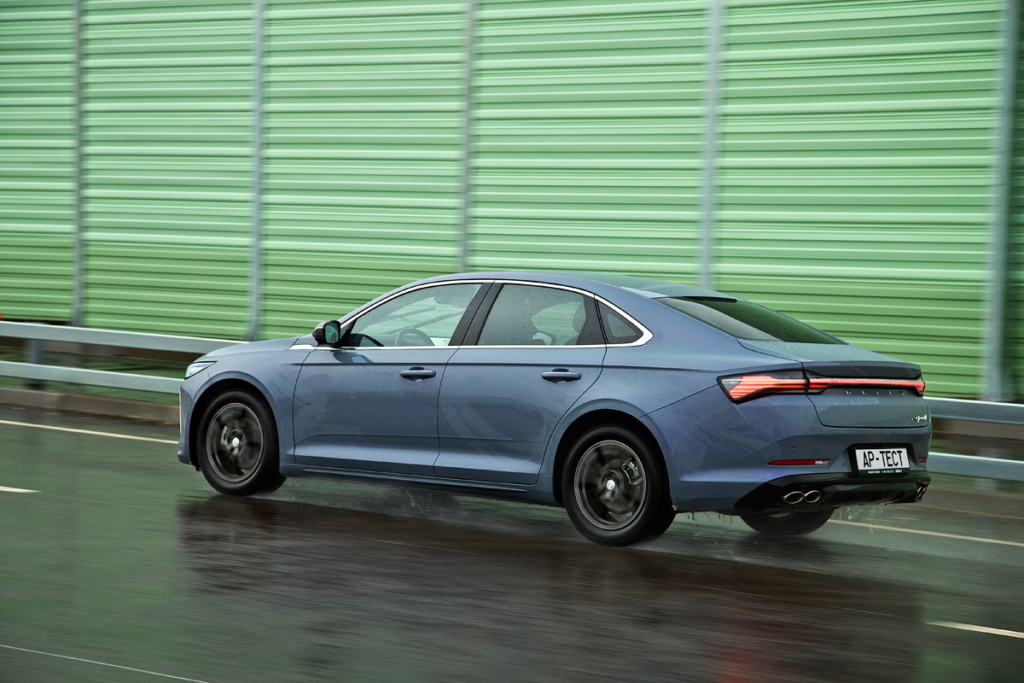
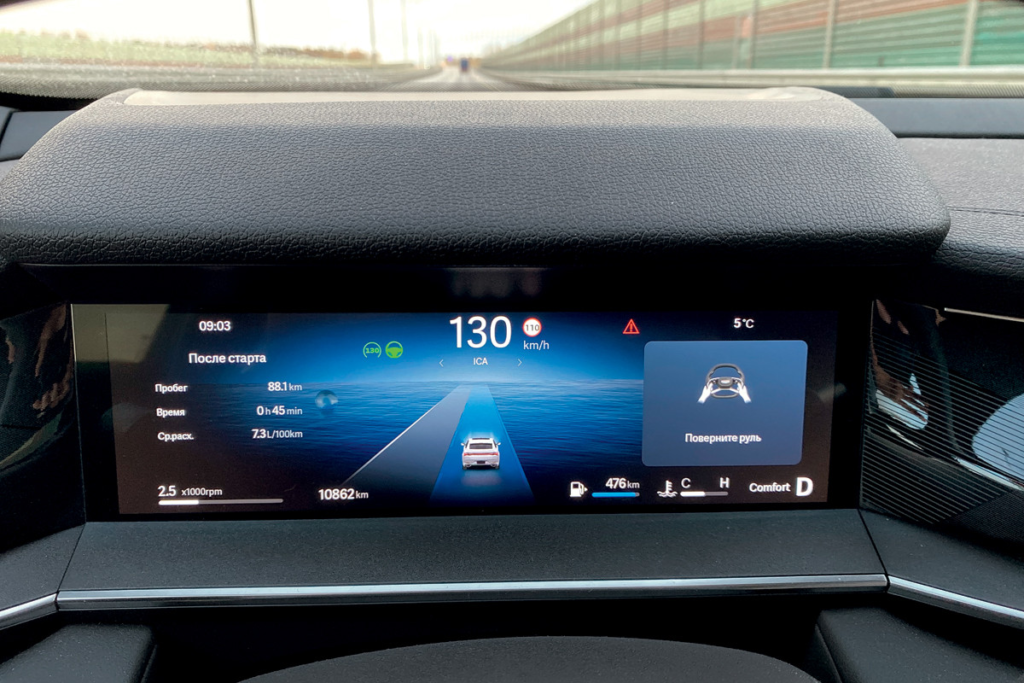
By the way, this was my first time traveling on the M11 in its new, “seamless” version after the last section—the Northern Bypass of Tver—opened. Now, one can speed from Moscow to Saint Petersburg without leaving the expressway: you take a ticket at the entrance and pay for the trip at the end of the route. I turned off to Pushkin, 20 km short of the Ring Road, and paid 4120 rubles for the road. On weekends, it costs an extra 300 rubles.
After spending the night in Pushkin, I switched to studless tires for the return trip. The same five hours of driving, and at the end of the route, the Geely’s route computer shows 7.2 l/100 km. The recorded savings are 0.3 l/100 km. The real difference, calculated based on the amount of refueled 95-octane gasoline, was even greater—0.4 l/100 km.
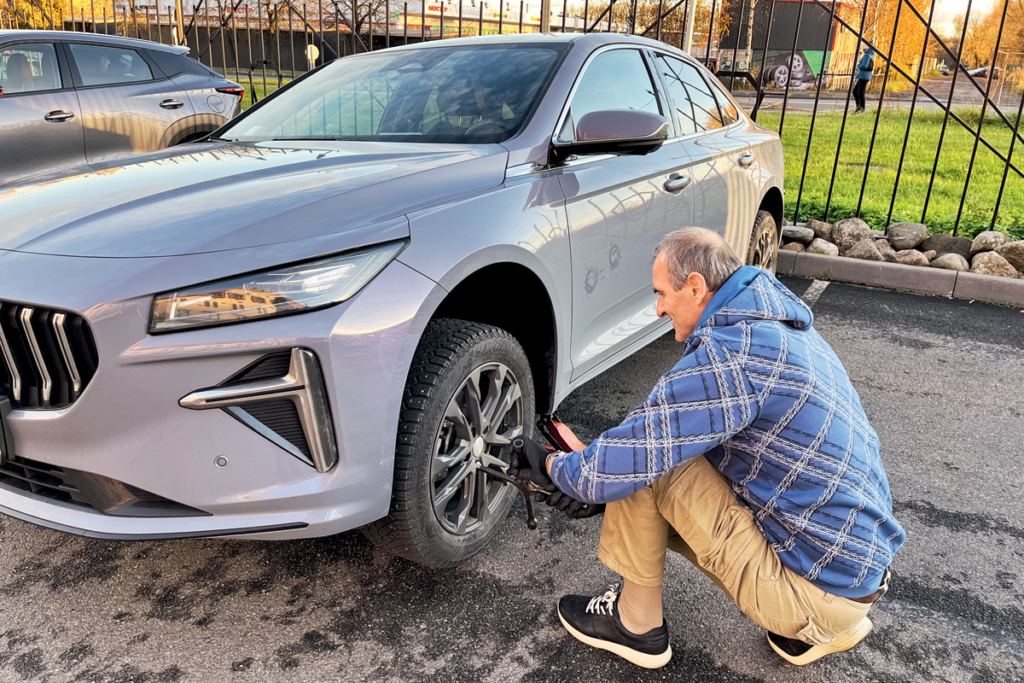
Change of wheels, mandatory pressure check (2.3 bar front and back) – and on the return trip from St. Petersburg to Moscow.
Certainly, studded tires have higher rolling resistance, but, as you’ll agree, fuel consumption readings are much more illustrative than dimensionless rolling resistance coefficients calculated during bench tests on running drums. On which studded tires roll… without studs. Thus, road test results are much closer to reality.
However, if translating specific consumption into absolute terms, studless tires on the Moscow to Saint Petersburg route allow saving 2.5 liters of gasoline. Or 150 rubles. Such an amount is unlikely to deter those accustomed to driving on studs. Safety arguments are far more important. For those, welcome to the specialized roads of the Dmitrovskoye Autodrome.
Understandably, studded tires are preferable in most situations on ice, and now we will not wait for winter to reconfirm this. Many drivers believe that studs worsen grip on asphalt. I am not so sure about that. My experience, based on dozens of comparative tests, suggests that it all depends on the specific tire model. In this case, we have tires from the same manufacturer, of the same construction, with similar asymmetric tread patterns—ideal conditions for a head-to-head duel. The Racelogic VBOX Sport will act as a second, allowing us to accurately assess the braking distance on wet and dry asphalt.
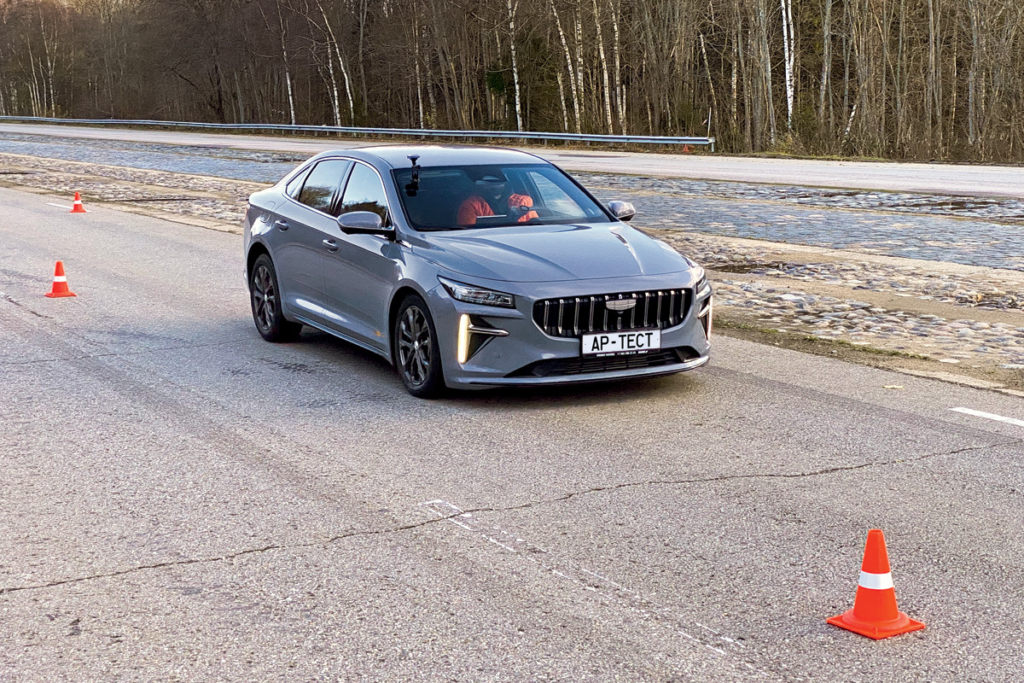
The studded tires withstood a series of full-force braking from a speed of 100 km/h without any losses: the tread does not look worn after the tests, all the studs are in place.
On each set, I perform five to six braking maneuvers, and after averaging the results, it turns out that the difference in braking distance from 80 km/h on wet asphalt is only 40 cm. And in favor of the studded Gislaved Nord*Frost 200 tires! On dry pavement, the delta is even smaller: 8 cm when braking from 100 km/h, which is comparable to the measurement error.
But here, it’s important to once again focus on absolute values. If on factory summer tires the Geely Preface stops from 100 km/h in 39—40 meters, on winter tires, the braking distance exceeds 53 meters! This means that, once you switch to winter tires, you must immediately change your driving style—reduce speed before turns, increase the following distance. Because if the vehicle in front of you is still on summer tires, its braking distance in an emergency will be noticeably shorter.
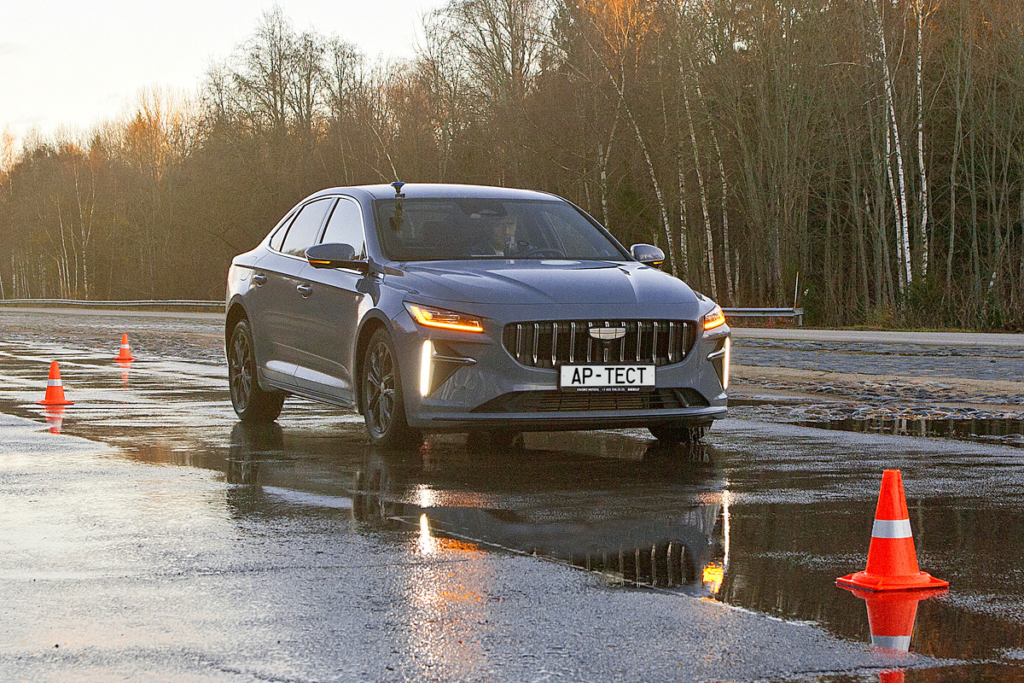
Braking on both dry and wet asphalt was carried out at a temperature of +3 C
Thus, to the arguments “for studs,” our experiment adds that studded tires on asphalt are not worse, and in the case of the Gislaved models, even slightly better than studless ones. However, the downside was fuel efficiency: highway fuel consumption on studs increases by 5%.
It’s interesting to wonder how the results would differ with tires from other manufacturers. This is something we aim to find out: Autoreview plans to continue real-world experiments with different types of tires.
| Tire Model | Average Fuel Consumption at 130 km/h (l/100 km) | Braking Distance on Wet Asphalt 80—0 km/h (m) | Braking Distance on Dry Asphalt 100—0 km/h (m) |
|---|---|---|---|
| Gislaved NordFrost 200 | 8.2 | 34.66 | 53.68 |
| Gislaved SoftFrost 200 | 7.8 | 35.06 | 53.76 |
Photo: Dmitry Piterskiy | Oleg Rastegaev
This is a translation. You can read the original article here: Зимние шины: с шипами или без? Сравниваем экономичность и тормозной путь.

Published December 05, 2024 • 7m to read




